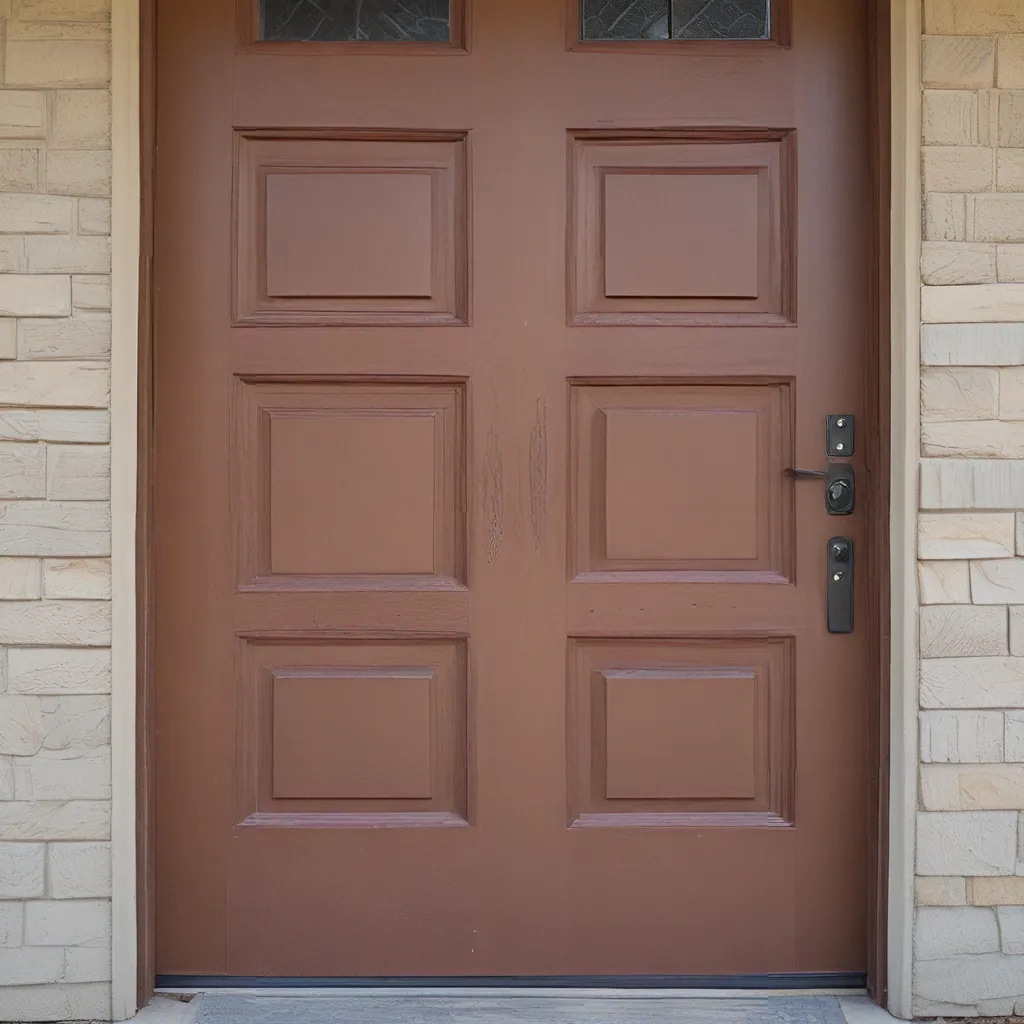
Homeowners and property managers often face the frustrating challenge of dealing with warped doors, an issue that can compromise the functionality, appearance, and security of a building. Whether it’s a front entry, a garage door, or an interior passage, a misaligned or distorted door can be a real source of headaches. In this comprehensive guide, we’ll delve into the common causes of door warping, outline effective diagnostic techniques, and provide step-by-step instructions for restoring proper door alignment and functionality.
Understanding the Causes of Door Warping
Door warping is a common problem that can arise due to a variety of factors, both environmental and structural. One of the primary culprits is exposure to moisture or extreme temperature changes, which can cause the door’s materials to expand and contract, leading to distortion over time. This is especially prevalent in areas with high humidity or dramatic seasonal fluctuations.
Another common cause of door warping is poor installation, where the door is not properly plumbed, leveled, or secured within the frame. This can create uneven stress on the door, leading to gradual warping and misalignment. Additionally, structural shifts or settling in the building can also contribute to door warping, as the frame and surrounding walls may no longer be perfectly square.
In some cases, damage or wear and tear to the door’s hinges, jambs, or other hardware can also lead to warping, as the door is no longer securely supported throughout its range of motion.
Diagnosing Door Warping Issues
Identifying the root cause of door warping is the first step in addressing the problem effectively. Here are some key diagnostic steps to help you pinpoint the issue:
-
Visual Inspection: Closely examine the door for any signs of distortion, such as bowing, twisting, or uneven gaps between the door and frame. Pay attention to the door’s overall alignment and how it sits within the opening.
-
Check for Binding: Carefully open and close the door, noting any areas where it binds or rubs against the frame. This can indicate the specific location and direction of the warping.
-
Perform a Plumb and Level Check: Use a level to assess whether the door frame is properly plumb (vertical) and level. Any significant deviations can contribute to door warping.
-
Inspect the Hardware: Examine the door’s hinges, latches, and other hardware for signs of wear, damage, or improper installation. Issues with the hardware can lead to misalignment.
-
Consider Environmental Factors: Evaluate the door’s exposure to moisture, temperature changes, and other environmental stressors that may be causing the warping.
Repairing Warped Doors
Once you’ve accurately diagnosed the underlying cause of the door warping, you can begin the process of restoring proper alignment. The specific repair approach will depend on the severity of the issue and the door’s construction, but here are some common strategies:
Adjusting the Door Hinges: If the warping is relatively minor, you may be able to correct it by making adjustments to the door hinges. This can involve shimming, tightening, or even replacing the hinges to properly support the door and bring it back into alignment.
Reshaping the Door: For more significant warping, you may need to physically reshape the door to restore its proper form. This can be done by clamping the door in a jig or frame and applying heat or pressure to gradually bend it back into the desired shape.
Replacing Door Hardware: If the warping is caused by worn or damaged hardware, such as hinges or latches, replacing these components can make a significant difference in the door’s alignment and functionality.
Addressing Structural Issues: In cases where the door warping is a result of larger structural problems, such as foundation settling or frame misalignment, you may need to consult a professional contractor to make more extensive repairs to the building’s structure.
Maintaining Door Alignment and Preventing Future Warping
To keep your doors in optimal condition and prevent future warping, it’s crucial to implement a regular maintenance routine. Here are some tips:
-
Monitor Environmental Conditions: Regularly check the temperature and humidity levels in the areas where your doors are installed, and make adjustments to mitigate extreme fluctuations.
-
Inspect and Lubricate Hardware: Examine the door hinges, latches, and other hardware for signs of wear or damage, and apply a light lubricant to keep them functioning smoothly.
-
Adjust Door Alignment: Periodically check the door’s alignment and make minor adjustments to the hinges or other hardware as needed to maintain proper positioning.
-
Protect Doors from Damage: Be mindful of the doors’ exposure to impacts, heavy loads, or other potential sources of damage that could contribute to warping over time.
-
Consider Upgrading to Smart Door Technology: Innovative smart door systems, such as those offered by MW Door Service, can provide advanced features and diagnostics to help monitor and maintain door alignment and functionality.
By understanding the causes of door warping, implementing effective diagnostic and repair techniques, and adopting a proactive maintenance approach, you can keep your doors operating smoothly and preserve the overall integrity of your building. Remember, a well-aligned door not only enhances the aesthetic appeal of your property but also contributes to improved security, energy efficiency, and long-term value.


